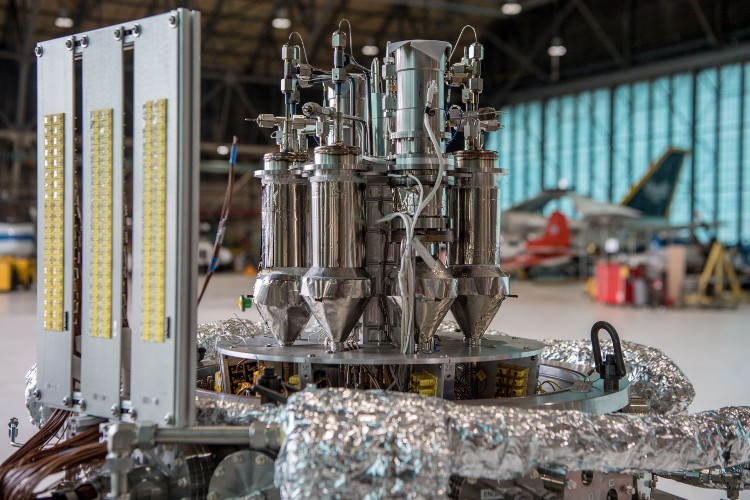NASA successfully tested Mars's nuclear reactor
The mini fission reactor will help astronauts settle long on Mars and colonize the planet.
The US Aeronautics and Aeronautics Agency (NASA) has announced the completion of a Kilopower mobile fission reactor test, a facility to power bases on Mars or Moon, yesterday. Test results are beyond expectations at all criteria, meaning the device can participate in more important flight tests.
NASA tested the nuclear power reactor on Mars.(Graphics: Next).
Kilopower is still a prototype, but the device is essential for space expeditions, where astronauts cannot carry all supplies to the spacecraft and are forced to produce energy far from Earth."We need to think about the resources needed to stay and explore," said Janet Kavandi, director of NASA's Glenn Research Center. "When we fly farther into the solar system, there will be times when carrying all the necessary supplies or supplies of supplies becomes dangerous. At this time, our explorers need to be able to produce themselves. export resources such as water, oxygen and rocket fuel ".
NASA performed the test called the KRUSTY (Stirring Reactor Using Stirling TechnologY) in the Nevada yard of the Energy Department test site. Kilopower is an experimental small fission reactor that uses a mass of uranium-235 longer than 15 cm as fuel. Fission in the core produces heat, which then converts heat into electrical energy. The team obtained results that far exceeded expectations when the device produced a capacity greater than 4 kilowatts at an operating temperature of 800 degrees Celsius, equivalent to a 35% higher efficiency.
The device will be resized to achieve the 10 kilowatt capacity target. A Mars base needs four reactors, according to NASA. The design is also the first new reactor in the United States in 40 years, said David Poston, a reactor engineer at the Los Alamos National Nuclear Security Agency's National Laboratory. The cost for the team to produce the prototype is only $ 20 million.

Successfully tested NASA's Kilopower reactor successfully.(Photo: Engadget).
The reactor operates very simply and safely, according to Poston. The only amount of radiation emitted from the uranium core is when the furnace is so low that it does not harm humans. When the furnace starts, the self-adjusting mechanism ensures safety for the device and requires little maintenance."Astronauts don't need to sit at the reactor control system all the time," Poston said.
Kavandi shares the Kilopower in NASA's larger plan including the Orion spacecraft and the Space Launch System, next to the Moon base as a research center and to explore the cosmos further. The Kilopower team will continue to conduct risk reduction studies in the next 18 months so the device is ready to participate in flight testing.
- NASA: Mars nuclear reactor was successfully tested
- China successfully tested 'Artificial Sun'
- There was once a nuclear reactor flying above our heads
- Successfully built Stellarator-type thermonuclear reactor
- Early nuclear fusion reactor
- Conceptual design of large plutonium nuclear reactor
- China tested the fast neutron reactor
- 13 years old to build a nuclear reactor
- China tested nuclear fusion reactors
- Mysterious uranium from Hitler's nuclear reactor
- Japan will restart the nuclear reactor safely
- Ikata nuclear plant passes an earthquake test
 Announced 3 houses on the Moon and Mars
Announced 3 houses on the Moon and Mars Science proves: Mars also knows 'deflated'
Science proves: Mars also knows 'deflated' Elon Musk announced the price for a Mars trip was 11.6 billion VND, free of charge
Elon Musk announced the price for a Mars trip was 11.6 billion VND, free of charge NASA discovered strange 'gate' on Mars, is the hiding place found?
NASA discovered strange 'gate' on Mars, is the hiding place found?